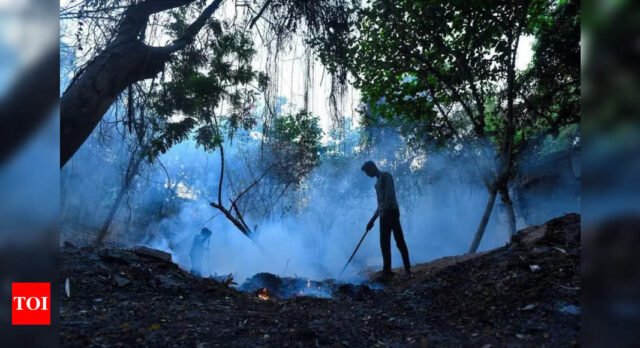Delhi Election Results 2025
According to data from the Central Pollution Control Board, air quality in Hyderabad has fluctuated over the past five years. The city’s average PM2.5 concentration was recorded at 76 in 2020, rising to 84 in 2021. While a gradual spike followed, with AQI levels reaching 103 in 2022, 110 in 2023, and 112 in 2024, a concerning increase was observed in 2025, with AQI soaring to 125. The World Health Organisation (WHO) recommends a safe PM2.5 limit of 5 µg/m³, yet current PM2.5 concentration in Hyderabad stands at 88 µg/m³ — over 17 times above the advised threshold.
Certain areas in Hyderabad bear the brunt of elevated pollution levels. Banjara Hills, Madhapur, Gachibowli, Sanathnagar, Kukatpally, and the old city consistently record higher PM2.5 readings due to dense traffic and ongoing construction activities. “Additionally, industrial zones like Patancheru and areas near the Outer Ring Road experience significant pollution, exacerbating health risks for residents,” said C Padmaja, a city-based researcher.
Healthcare professionals are particularly concerned by the increasing number of lung cancer cases among non-smokers. “Short-term episodes of air pollution can heighten respiratory infections and worsen disease-related exacerbations of asthma and COPD. Long-term exposure to PM2.5 significantly raises the risk of lung cancer, even in non-smokers,” said Dr Hari Krishna G, a pulmonologist.
He emphasised the urgency of data collection on lung cancer in India, stating, “Outdoor air pollution and PM are classified as Group 1 human carcinogens. There is a tangible risk of developing adenocarcinoma due to prolonged PM2.5 exposure. Immediate measures should prioritise early detection, smoking cessation, and stringent control of both outdoor and indoor air pollution.”
Environmentalists stress the need for comprehensive strategies to improve Hyderabad’s air quality. “Implementing stricter emission regulations, promoting public transportation, and expanding green spaces are essential steps to safeguard public health and reverse current trends,” said Rajashekhar T, an ecologist.
As pollution levels continue to rise, experts advocate for immediate intervention to mitigate health risks and curb the increasing burden of lung diseases.






